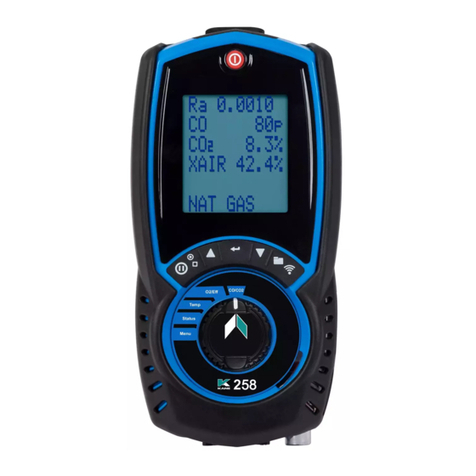
KANE425 manual Page 10
3. USING THE FOUR FUNCTION BUTTONS:
Switching
ON the
Analyser
Press button to switch the unit ON . This must be done
in fresh air to ensure that the analyser auto calibrates its’
sensors properly.
When switched on, the analyser beeps twice and briefly
displays battery %, fuel and pressure units. Its’ bottom line
counts down from 60 until the sensors are ready to use – This
normally takes 20 - 30 seconds but may take longer as sensors
get older. If the analyser will not auto calibrate, its’ sensors
need to be replaced or recalibrated by an authorised repair
centre.
If an inlet temperature probe (optional) is connected into the T2
socket during its’ countdown, the measured temperature from
the inlet probe will be used as the inlet temperature.
If an inlet temperature probe is not connected to the analyser
during countdown the measured temperature from the flue
probe will be used as the inlet temperature.
If neither probe is connected during countdown the analyser’s
internal ambient temperature will be used as the inlet
temperature.
Switching
OFF the
Analyser
Press button to switch the analyser OFF. The display
counts down from 30 with the pump on to clean the sensors
with fresh air – If the probe is still connected, make sure
analyser and probe are in fresh air.
Press if you want to stop the countdown and return to
making measurements.
Note: The analyser will not switch off unless the CO
reading is below 20ppm




























